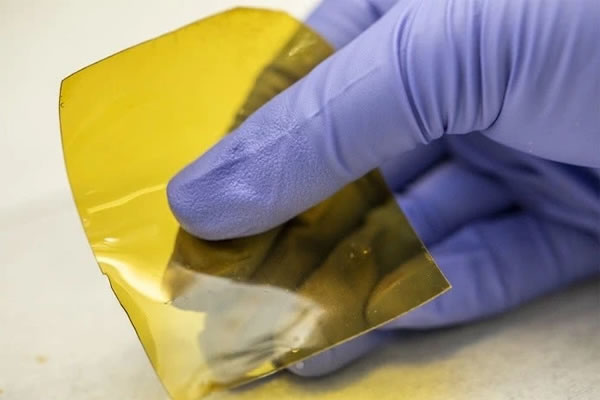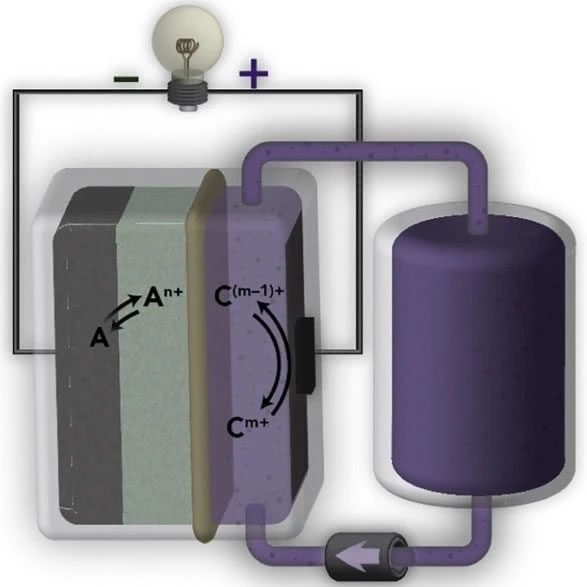The storage of renewable energy has always plagued humans. To solve this problem, engineers designed a giant battery for the power grid: a flow battery, which can store electrical energy in a liquid electrolyte. However, so far, power companies have not found an economical, efficient and reliable flow battery to provide long-term, stable energy storage and energy supply services for thousands of families. According to a report by techxplore.com on November 7, the thin-film battery technology developed by researchers at the US Department of Energy's Lawrence Berkeley National Laboratory may be a proper solution to the problem of energy storage. The researchers used polymer AquaPIMs as raw materials to develop a multifunctional, inexpensive battery membrane. This polymer film makes the manufacture of long-life, low-cost grid batteries feasible. The researchers also developed a simple model that can be used to analyze the effect of different battery films on battery life. This has a huge impetus to the early development process of flow battery technology. Brett Helms, principal investigator of the Joint Energy Storage Research Center (JCESR), Berkeley Lab researcher and project leader, said: "AquaPIM-based membrane technology can accelerate the market development of flow batteries. Other researchers use our technology and empirical models , You can quickly assess the condition of the battery assembly. This can save a lot of time and resources. " The chemicals used in most grid batteries are highly alkaline, but the advanced battery membranes used today (such as fluorinated polymer membranes) are designed for acidic chemical reactions. Helms said that the cost of battery membranes can account for 15% to 20% of the total battery cost. The first author of the paper, Miranda Baran, a researcher in the Helms laboratory, added: "This shows that replacing fluorinated membranes with high-performance alternatives is an effective way to reduce the cost of flow batteries." In the early experiments, Helms and others found that the battery membrane modified with amidoxime can make ions move quickly between the anode and the cathode. Later, they also confirmed that AquaPIM membrane is very stable in alkaline electrolyte. This stability effectively suppresses the collapse of the AquaPIM membrane pores, allowing it to maintain electrical conductivity. When evaluating the performance of the AquaPIM membrane, the researchers developed a model that established the relationship between battery performance and membrane performance. With the help of this model, researchers can predict the life and efficiency of flow batteries without making a complete battery device. Moreover, the new model can also be used for the study of other battery chemicals and battery membranes. Helms said: "Generally speaking, you need to wait weeks or even months to figure out the life of the battery. And the model we designed can shorten the time to a few hours or days." The researchers' next plan is to use AquaPIM membranes for the chemical reactions of metal-inorganic and organic-polymer flow batteries. They predict that AquaPIM membranes also have good compatibility with other types of alkaline zinc batteries. Fiber optic waterfall lighting is a new creative lighting.It is un-replaceable because of its special design and lighting effect. Fiber Optic Waterfall,Fibre Optic Waterfall,Led Fiber Optic Curtain,Fiber Optic Wall Jiangxi Daishing POF Co.,Ltd , https://www.opticfibrelight.com
AquaPIM flow battery membrane. 
Researchers at Berkeley Labs are testing AquaPIM flow battery membranes. 
Schematic diagram of a flow battery with an ion-selective AquaPIM membrane (beige).
It is widely used in hotel, night club,wedding,bar, entertainment center and home decoration etc.
Sparkle Fiber Optic,it is processed from plastic bare fiber optic,widely used at Led fiber optic curtain, fiber optic chandelier, and something other place